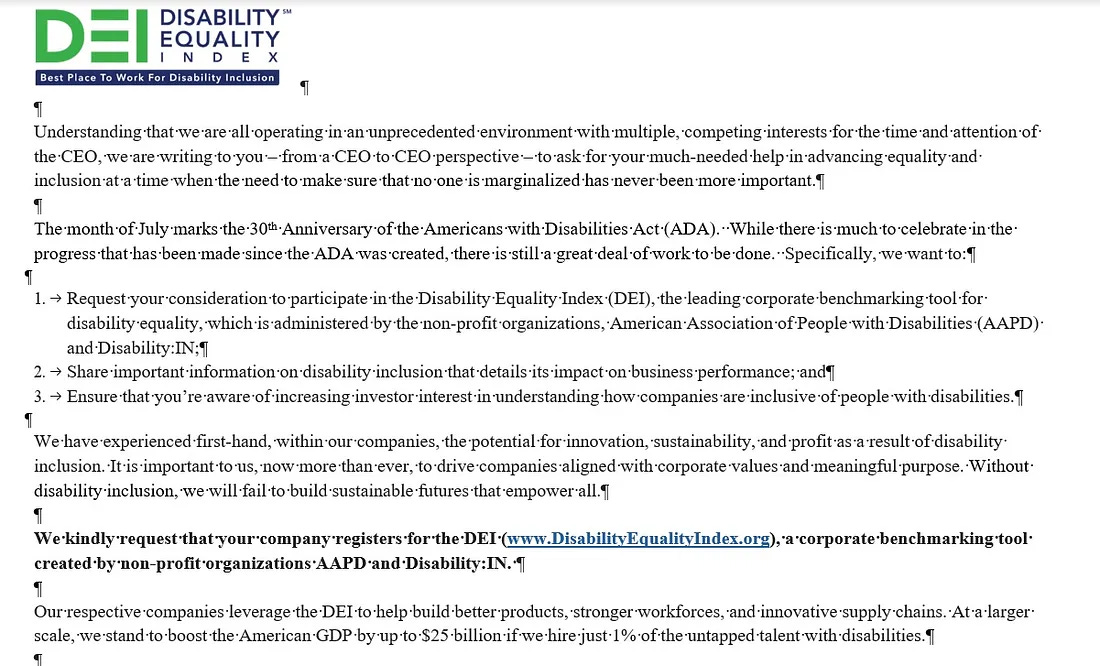Female leaders are better at ensuring people with disabilities aren’t excluded
Good news, but simultaneously depressing because female leadership is so vastly underrepresented in both government and private business
In the article “What Do Countries With The Best Coronavirus Responses Have In Common? Women Leaders,” the female leaders of Denmark, Iceland, Germany, Taiwan, New Zealand, Norway, and Finland were hailed for their decisiveness in locking down their respective countries, their use of technology to track COVID cases, and their direct communications with children.
A scientific study that matched female-led countries with male-led countries both by geography and population backs up this anecdotal conclusion. This study attributed the following traits associated with female leadership to better COVID outcomes:
There are gender differences associated with risk. Women leaders are more likely to be risk-averse.
There are gender differences associated with leadership style. Male leaders are more likely to be task-oriented; women leaders are more likely to lead interpersonally.
Women need to have good communication skills to be selected as leaders. This is one of the critical core competencies in successfully managing during a crisis.
Why does female leadership matter?
Because the COVID death rate in some male-led countries is between 1.9 and 2.4 times higher for people with disabilities than people without disabilities!
For people with developmental disabilities, the death rate is even higher — 2.5 times more people with IDD are dying from COVID in the United States.
The bottom line is this: if you are a person with a disability and live in one of the seven countries with female leaders, you are more likely to be alive today because of that female leader’s approach to COVID. And her COVID policies and practices likely include the needs of people with disabilities, instead of excluding them. Unfortunately, less than 10 % of the world’s UN-recognized countries as of the writing of this article are female, despite being half of the population.
What about the corporate world?
Disability:IN has launched an initiative to get CEOs to sign on to a letter committing to more meaningful corporate inclusion efforts explicitly related to disabilities.
Eighteen Fortune 1000 CEOs have signed onto this letter so far. Six of those 18 CEOs are women, a rate of over 33 % of the letter’s signatories. However, women only make up 7.4 % of the CEOs in the Fortune 500 (could not find a current rate for the Fortune 1000). That means female CEOs are signing on to the Disability:IN initiative at almost five times the rate that they appear in the CEO population. To look at it from another perspective, six out of 37 women (16.2 % of all Fortune 500 female CEOs) have signed the letter, while only twelve out of 463 men (2.6 % of all male Fortune 500 CEOs) have done the same.
The core purpose of Disability: IN’s letter is to urge other companies to complete the Disability Equality Index survey. The DEI is an incredibly detailed review of many different areas associated with successful disability inclusion, including:
Culture and Leadership
Enterprise-wide access
Employment practices (benefits, recruiting, employment, education, retention & advancement, and accommodations)
Community engagement
Supplier diversity
Currently, the DEI only reviews US-based operations. Non-US operations will be coming in a future DEI version. Any organization that is claiming inclusion in general or disability inclusion in specific and not just performative disability allyship needs to be executing a slew of disability-related programs and tasks in these five categories.
The most critical paragraph in the CEO letter from Disability: IN is this: (separated into three pieces for readability)
We have experienced first-hand, within our companies, the potential for innovation, sustainability, and profit as a result of disability inclusion.
It is important to us, now more than ever, to drive companies aligned with corporate values and meaningful purpose.
Without disability inclusion, we will fail to build sustainable futures that empower all.
Women leading large companies are committing to inclusion and meaningful change for their employees and customers with disabilities. Which by inference, means they are making an identical commitment to disability inclusion to their shareholders. These women recognize that excluding people with disabilities from corporate inclusion efforts is unsustainable for the businesses that they lead.
Their male counterparts are not doing so in nearly the same numbers. Since it’s past time for someone to point this out, I thought I would.
Women Equality Disability Accessibility Discrimination




